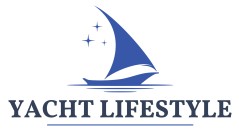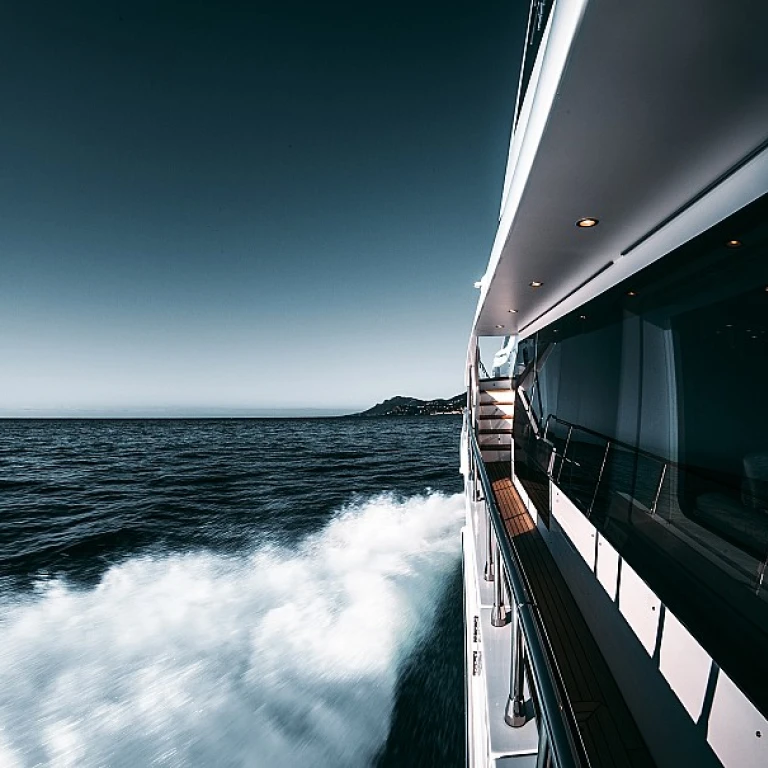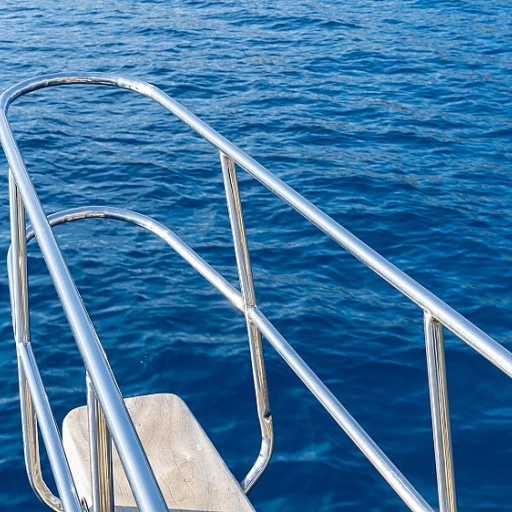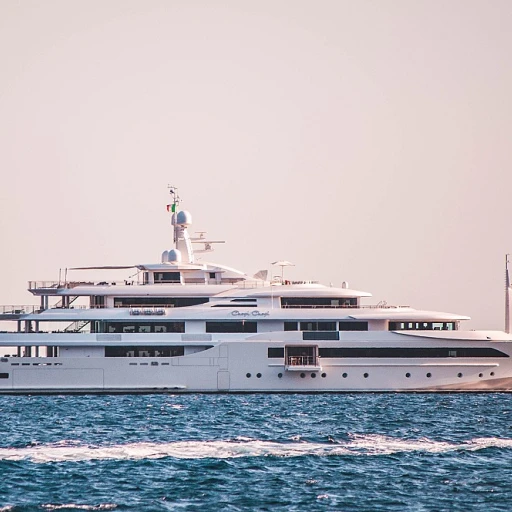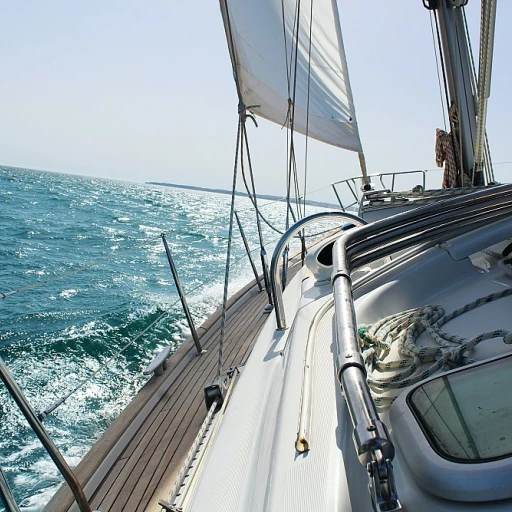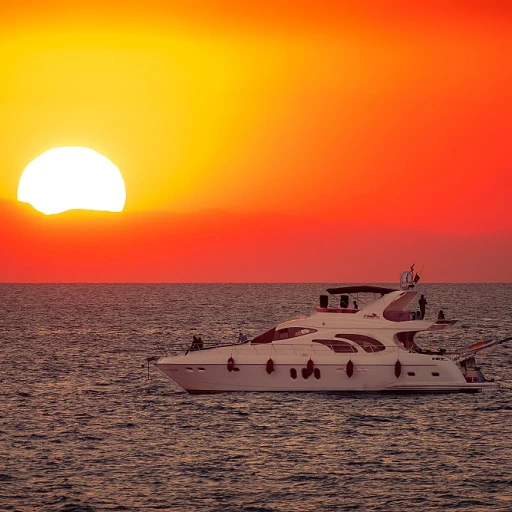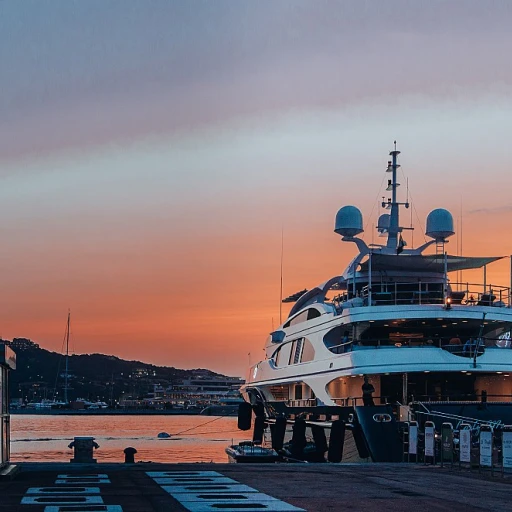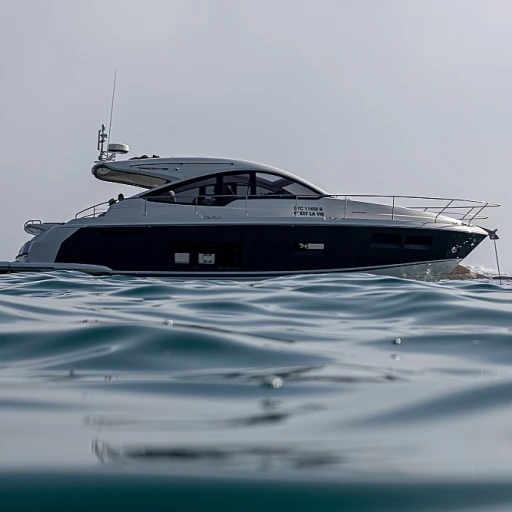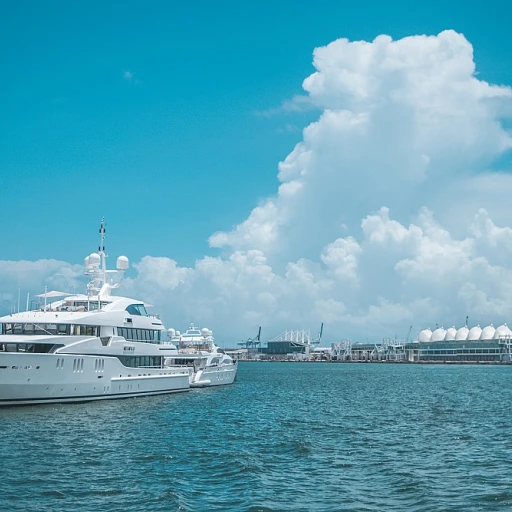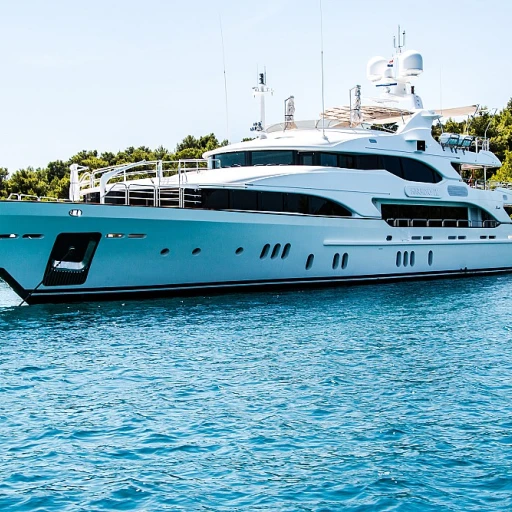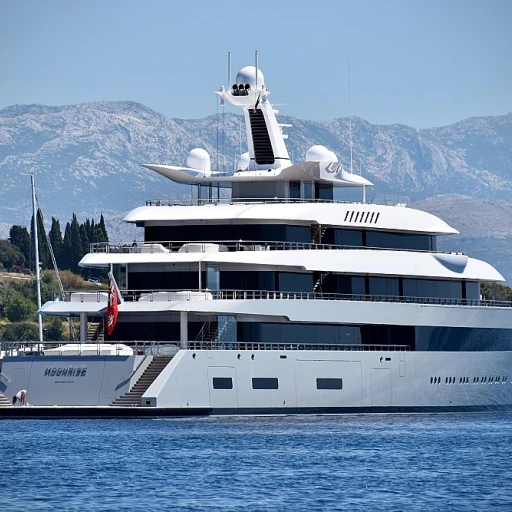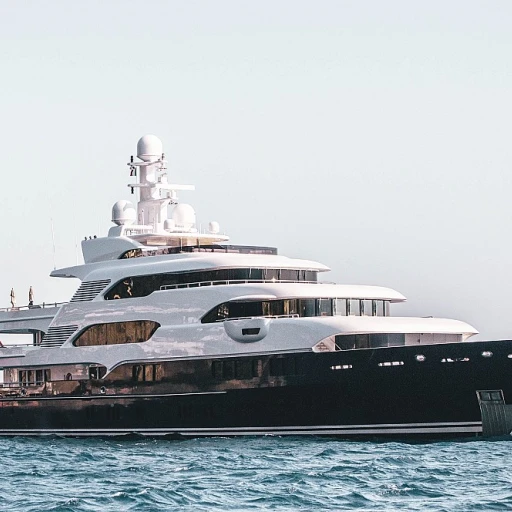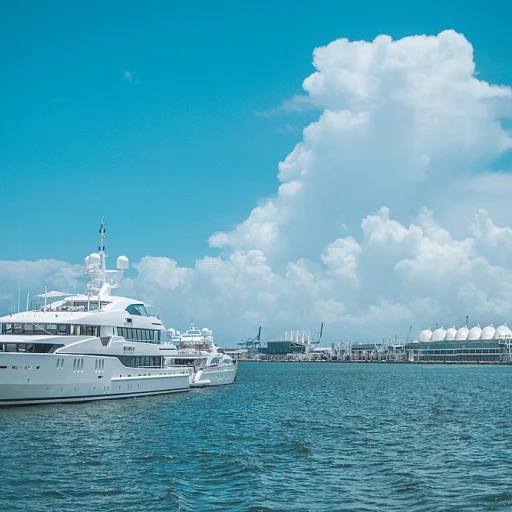
Understanding the Basics
Basic Concepts of Catamarans and Yachts
Understanding the foundational distinctions between catamarans and yachts is crucial for making an informed decision. These two types of vessels cater to diverse preferences and requirements, whether you're into leisurely sailing or power cruising. Both catamarans and yachts boast unique attributes and excel in different areas. Catamarans, characterized by their dual hull structure, are renowned for the stability they offer even in turbulent waters. This design minimizes rolling and provides a more comfortable sailing experience, particularly for those new to sailing. Meanwhile, yachts, often with a monohull design, promise a traditional sailing experience with the potential for competitive racing and precise handling. Each vessel type addresses distinctive needs, and it's important to consider what matters most to you — be it speed, living space, or the allure of a power or sailing yacht. For navigation enthusiasts who relish the idea of a sleek monohull cutting through the waves, yachts present an appealing choice. On the other hand, if stability and ample space are priorities, catamarans might hold the upper hand. Yachts and catamarans also cater to different kinds of waters and depths. Monohulls typically demand deeper drafts, whereas catamarans can access shallower waters, thanks to their shallow draft. This can significantly influence where you can safely charter and explore during your maritime adventures. For individuals interested in exploring more about vessel types and their purposes, the market for a charter fishing vessel might provide insightful parallels and additional context. Explore the market for charter fishing vessels to gain broader insights into the diverse world of marine transportation choices.Performance and Handling
Performance on the Water
When it comes to the performance and handling of catamarans versus monohull yachts, several key differences can impact your sailing experience. Catamarans are renowned for their speed and stability on the water, thanks to their dual hull design. This unique structure offers an effortless sailing experience, minimizing the lateral roll that monohulls often experience.
Unlike their monohull counterparts, catamarans can glide smoothly even in choppy conditions, providing a steady platform that can be particularly beneficial for those who may be more prone to seasickness. This stability also extends to their anchoring, making them ideal for shallow draft environments, where traditional sailing yachts might struggle. Exploring the dynamics of yacht sales can provide additional insights into the preferences for these two vessel types.
Monohulls, on the other hand, tend to offer a more traditional sailing experience. For those who relish the challenge and skill of sailing, a monohull yacht can be quite rewarding. Their single hull provides a sense of intimacy with the water, offering a dynamic and exhilarating ride for those who enjoy the feeling of heeling over as they cut through the waves.
If considering power capabilities, catamarans often require two engines, which may translate to higher power costs, yet offer reliable propulsion. Meanwhile, a motor yacht or power catamaran is engineered for those prioritizing speed and power above all.
Comfort and Space
Luxury and Leisure: Making the Right Space Choice
When considering comfort and space, you'll find that catamarans and yachts each offer distinct advantages. The quest for a leisurely onboard experience often begins with assessing the available living space. Catamarans, with their dual-hull design, provide unparalleled stability and spaciousness. This translates to expansive living areas, perfect for entertaining guests or simply unwinding on the water. Their broad beam affords catamarans an extra wide deck, creating more room for sunbathing and socializing. Additionally, the separation between the hulls in a catamaran allows for private cabins, maximizing both space and privacy. In contrast, monohull yachts, particularly sailing yachts, often prioritize performance over spaciousness due to their single hull design. Yet, they still offer a luxurious and intimate onboard experience. The interiors of monohulls are often crafted with exquisite attention to detail, providing a cozy and refined environment, complete with elegant dining and lounging areas. For those desiring more space or planning a yacht charter with family or friends, catamarans offer a more generous living space, making them ideal for larger groups. Conversely, if your focus is on a more traditional sailing experience with a touch of intimacy, a monohull yacht will accommodate those needs gracefully. Power catamarans enhance the comfort factor with additional power, making them suitable for those who prioritize speed alongside space. These boats retain the spacious advantages of their sailing counterparts while offering superior speed and ease of navigation. Ultimately, the decision hinges on your specific preferences for space and leisure. Each type of vessel will provide a unique setting for your yachting experience. For more insights into how space impacts cost, you might find it beneficial to explore the costs associated with luxurious yachts such as the Lamborghini 63 here. This will help you better understand the relationship between space, luxury, and cost.Cost Considerations
Evaluating the Financial Aspects
When determining whether to invest in a catamaran or a yacht, understanding the financial considerations is imperative. Each choice presents unique cost structures, impacting both your wallet and sailing experience. Catamarans often come at a higher initial purchase price than monohulls, due to their dual hull construction and expansive space. Despite these up-front costs, operational expenses can sometimes be lower, thanks to their stability and efficiency. Power catamarans, for example, generally consume less fuel than motor yachts of similar size, which might appeal to those looking for economy in fuel consumption. Monohulls, on the other hand, are typically more affordable at purchase but may incur higher crew costs. Their need for deeper docking and increased maintenance because of their single hull can also add to ongoing expenses. However, many sailing enthusiasts appreciate the traditional sailing experience only a monohull yacht can provide, often valuing this aspect over cost. For those considering chartering rather than purchasing, both yacht charters and catamaran charters offer different financial advantages. A catamaran charter can be more appealing for its spacious living quarters and shallow draft, making them ideal for exploring shallow waters and remote areas. On the other hand, sailing yachts provide a classic sailing adventure, often at a lower charter cost, appealing to those looking for a more traditional experience. Ultimately, discerning the right vessel involves carefully balancing your budget with the type of boating experience you desire. Each option has distinctive financial pros and cons, shaped by factors such as hull design, crew requirements, and operational efficiency. For more comprehensive insights on managing yacht expenses, consider exploring articles dedicated to navigating costs in yacht ownership.Environmental Impact
Environmental Footprint: Sailing vs. Power
When deliberating between a catamaran and a yacht, the environmental impact is an increasingly vital consideration. It's essential to note that the choice between sailing and power impacts the vessel's eco-friendliness. Sailing catamarans and monohulls, for instance, rely primarily on wind propulsion. This significantly reduces the dependency on fossil fuels, making them a greener choice. In contrast, power yachts and catamarans are fuel-driven, contributing more to carbon emissions.Hull Design and Energy Efficiency
The design of the hull plays a crucial role in energy efficiency. Catamarans, with their twin hulls, typically offer better fuel efficiency compared to monohulls. This is due to lower water resistance and the ability to maintain speed with less power. Boats like the power catamaran, despite being motorized, benefit from this enhanced efficiency, consuming less fuel than traditional motor yachts.Impact of Living Space on Resources
The amount of living space affects not only comfort but also resource consumption. Catamarans inherently provide more stable and spacious living quarters, thanks to their broad beam. This increased space can lead to higher energy demands, particularly in heating or air conditioning. However, it is noteworthy that the generous space doesn't necessarily translate to higher consumption if managed efficiently.Marina and Mooring Considerations
Both types of vessels have distinct needs when docked or moored. Catamarans, due to their wider berth, often require larger spaces at marinas, potentially increasing mooring costs. However, their shallow draft allows them access to quieter, less congested areas, minimizing environmental disruption. Ultimately, mindful usage and efficient technology can mitigate some environmental impacts, making the choice between a catamaran and a yacht less burdensome on our oceans.Choosing the Right Vessel for Your Needs
Identifying Your Perfect Match
When selecting the best maritime vessel for your needs, a clear understanding of what each type of boat offers is crucial. Consider the following aspects to ensure your decision aligns with your preferences and requirements on the water.
A catamaran is known for its stability and spaciousness. Due to its twin-hull design, it often provides a wider living space, making it an excellent choice for families or those who enjoy group outings. The shallow draft allows for explorations in waters that might be inaccessible to monohulls. This is particularly advantageous if you’re attracted to anchoring near pristine beaches or navigating shallow waters.
On the other hand, a monohull—whether a sailing yacht or a motor yacht—might appeal to those who cherish the classic sailing experience. Their traditional design often provides a different feel, favored by seasoned sailors who appreciate the boat's handling and performance in various conditions. Moreover, monohulls typically bring a swifter, more exhilarating ride, making them a favorite among those keen on performance and speed.
Cost comparison also plays a role in your choice. Assess your budget after considering initial purchase costs, ongoing maintenance, and operational expenses. Bear in mind that power catamarans or catamaran yachts often come with varied financial demands compared to their monohull counterparts.
Finally, consider what kind of sailing experience you wish to have. A crew-oriented vessel might be your go-to if you're looking for leisure trips with others who share your passion for sailing. Alternatively, a power catamaran or catamaran motor can satisfy those who prefer a leisurely pace with a focus on comfort over traditional sailing dynamics.
